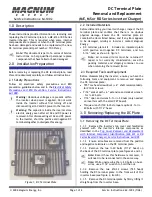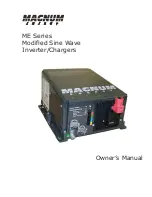
4
1.0 Grundlagen Digitaltechnik
Der Vorteil einer Digitalsteuerung liegt
in der individuellen Steuerung aller auf
dem Gleis befindlichen Lokomotiven.
Dabei liegt der Fahrstrom dauerhaft auf
dem Gleis an, im Gartenbahnbereich
sind das ca. 22 Volt. Jede Lokomotive
verfügt dabei über einen sogenannten
Digitaldecoder, in dem die Eigen-
schaften der Lok individuell eingestellt
werden (z.B. die Lokadresse, Fahreigen-
schaften, Helligkeit der Lampen, etc.).
Eine Digitalzentrale und ein Handregler
übernehmen dabei die Aufgabe der
Steuerung: Auf dem Handregler wird die
gewünschte Lokomotive ausgewählt so-
wie Fahr- und Funktionsbefehle erzeugt.
Die Digitalzentrale verarbeitet anschlie-
ßend diese Informationen des Handreg-
lers und sendet sie mit dem Fahrstrom
auf das Gleis. Sämtliche Digitaldecoder,
die mit dem Gleis verbunden sind erhal-
ten diese Informationen und entschei-
den, abhängig von Ihrer Lokadresse,
für wen diese Befehle sind. So fährt
schlussendlich nur die gewählte Lok,
alle anderen reagieren nicht, da sie auf
eine andere Adresse (Lokadresse) hö-
ren. Damit im Digitalsystem die Decoder
mit verschiedenen Adressen arbeiten,
werden im Decoder einige Einstellungen
vorgenommen. Dabei nutzt man eine
sogenannte CV-Tabelle. ‚CV‘ (englisch)
1.0 Basics of digital control
The primary benefit of digital control is
to individually control multiple locomo-
tives on the same track at the same
time. Power is supplied to the track at
all times. In G-scale the track power is
generally 18-22 Volts. Each locomotive
is equipped with a digital decoder which
is programmed with the locomotive‘s
individual properties, e.g. address,
maximum speed, voltage of the light
bulbs.
Control is achieved by a digital central
station in conjunction with a handheld
controller. The controller converts the
user‘s commands into digital signals
which the central station sends onto the
track after processing. Every decoder
which is connected to the track receives
these signals and decides based on the
address whether the commands are
to be executed. Several safety features
in the communication protocol ensure
that there are no malfunctions. Only the
selected locomotive responds to the
inputs of the handheld controller.
To ensure proper operation, the decod-
ers need to be individually programmed
according to the CV-table. CV stands
for configuration variables and the
table holds the individual data for the
properties of a decoder. CV 1 holds the
address of the decoder; others define





































